Mengjuan Xu
Single Model Deep Learning on Imbalanced Small Datasets for Skin Lesion Classification
Feb 02, 2021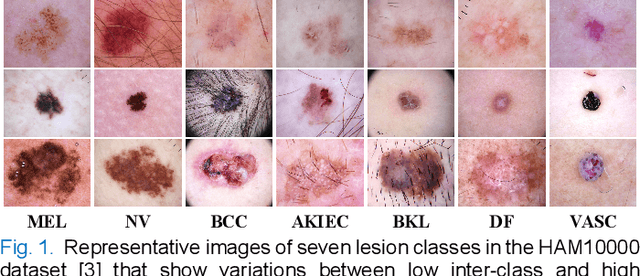
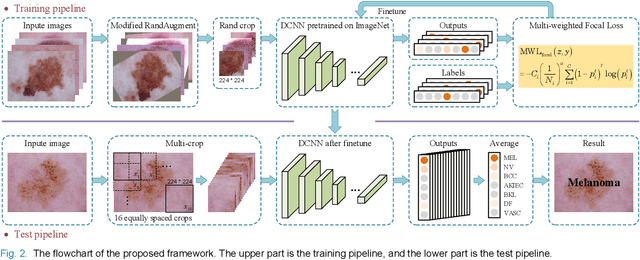
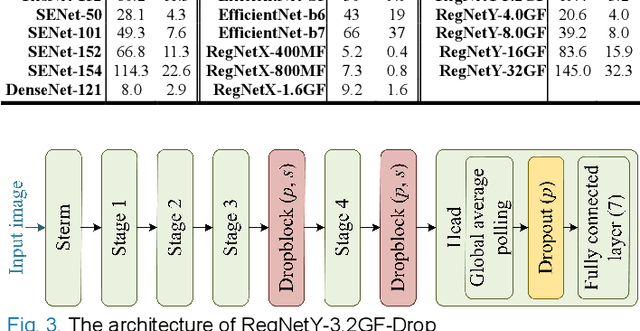
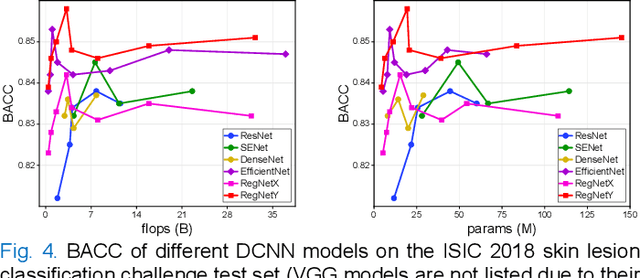
Abstract:Deep convolutional neural network (DCNN) models have been widely explored for skin disease diagnosis and some of them have achieved the diagnostic outcomes comparable or even superior to those of dermatologists. However, broad implementation of DCNN in skin disease detection is hindered by small size and data imbalance of the publically accessible skin lesion datasets. This paper proposes a novel data augmentation strategy for single model classification of skin lesions based on a small and imbalanced dataset. First, various DCNNs are trained on this dataset to show that the models with moderate complexity outperform the larger models. Second, regularization DropOut and DropBlock are added to reduce overfitting and a Modified RandAugment augmentation strategy is proposed to address the defects of sample underrepresentation in the small dataset. Finally, a novel Multi-Weighted Focal Loss function is introduced to overcome the challenge of uneven sample size and classification difficulty. By combining Modified RandAugment and Multi-weighted Focal Loss in a single DCNN model, we have achieved the classification accuracy comparable to those of multiple ensembling models on the ISIC 2018 challenge test dataset. Our study shows that this method is able to achieve a high classification performance at a low cost of computational resources and inference time, potentially suitable to implement in mobile devices for automated screening of skin lesions and many other malignancies in low resource settings.
Low-cost and high-performance data augmentation for deep-learning-based skin lesion classification
Jan 07, 2021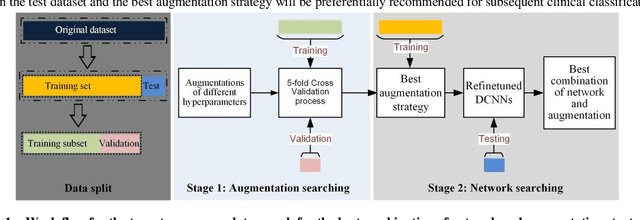

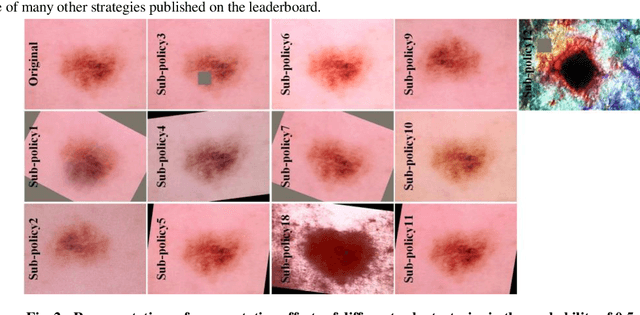

Abstract:Although deep convolutional neural networks (DCNNs) have achieved significant accuracy in skin lesion classification comparable or even superior to those of dermatologists, practical implementation of these models for skin cancer screening in low resource settings is hindered by their limitations in computational cost and training dataset. To overcome these limitations, we propose a low-cost and high-performance data augmentation strategy that includes two consecutive stages of augmentation search and network search. At the augmentation search stage, the augmentation strategy is optimized in the search space of Low-Cost-Augment (LCA) under the criteria of balanced accuracy (BACC) with 5-fold cross validation. At the network search stage, the DCNNs are fine-tuned with the full training set in order to select the model with the highest BACC. The efficiency of the proposed data augmentation strategy is verified on the HAM10000 dataset using EfficientNets as a baseline. With the proposed strategy, we are able to reduce the search space to 60 and achieve a high BACC of 0.853 by using a single DCNN model without external database, suitable to be implemented in mobile devices for DCNN-based skin lesion detection in low resource settings.
 Add to Chrome
Add to Chrome Add to Firefox
Add to Firefox Add to Edge
Add to Edge